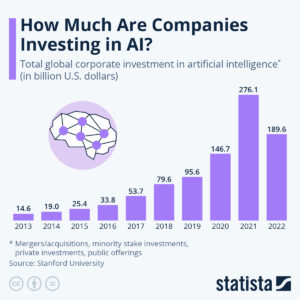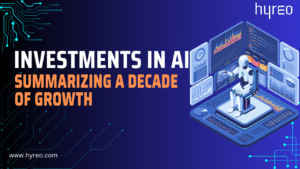Increased Investment in AI Companies Like Mistral AI and Databricks — What’s Driving It, What It Means, and What Comes Next
Investors around the world are pouring record sums into artificial intelligence companies. Two illustrative examples from 2025 are Mistral AI, a fast-rising French model builder that just closed a multibillion-euro round with major strategic backers, and Databricks, the enterprise data-and-AI powerhouse that has seen its valuation surge and raised fresh capital to accelerate AI product lines. Together they show the shape of today’s AI investment environment: enormous enthusiasm, strategic industrial partnerships, enterprise demand for AI-enabled data platforms, and a growing debate about concentration, national tech strategy, and long-term sustainability. This article explains why this wave of investment is happening, what investors are buying, the implications for startups and incumbents, the risks involved, and how it could reshape the next five years.
What just happened (briefly)
-
Mistral AI, a Paris-based model startup, announced a large Series C that brought in roughly €1.7 billion led by ASML, making ASML a major shareholder and valuing the company in the multi-billion euro range. This round signals strategic industrial backing for a European champion in generative models. Reutersmistral.ai
-
Databricks, the enterprise data-and-AI company, announced a fresh funding round that pushed its valuation above $100 billion, and closed a roughly $1 billion tranche while projecting a run-rate around $4 billion (highlighting the commercial traction of its AI offerings). The company said it will use the capital to expand its AI strategy, including agent products and an AI-optimized database stack. Databricks+1Reuters
These are emblematic, not isolated — similar massive rounds and valuations have rippled through the AI ecosystem in 2024–2025.
Why investors are committing massive capital now
Several converging forces explain the surge:
1. Explosive demand for AI compute, models, and data platforms
Enterprises want to deploy AI in production — for recommendations, automation, code generation, retrieval-augmented tasks, and more. That requires scalable data infrastructure (where Databricks plays), high-quality models and research (Mistral’s domain), and specialized tools (agents, vector DBs, ML ops). Investors see these companies as critical pieces of an AI supply chain that enterprises will pay handsomely for. Evidence of growing enterprise ARR and product launches underpins the willingness to invest at high valuations. Databricks+1
2. Strategic industrial partnerships
Large industrial players are no longer passive limited partners — they’re strategic backers. ASML’s lead investment in Mistral, for example, is not purely financial: it’s about aligning AI model development with semiconductor roadmaps and European tech sovereignty goals. Strategic investors bring supply chain knowledge, customer relationships, and long-term thinking that institutional VCs often lack. That makes bigger checks more palatable. AP NewsReuters
3. The enterprise monetization story
Unlike many previous technology waves, AI already shows clear revenue pathways: SaaS subscriptions, inference services, fine-tuning contracts, and embedded AI features. Databricks’ accelerating revenue run-rate and productization of “agent” features is a prime example — investors reward companies that show they can turn AI into predictable, recurring revenue. Databricks
4. Fear of missing out (FOMO) and the winner-take-most dynamic
AI markets tend toward concentration: foundational models and data platforms benefit from scale effects (more data → better models; more customers → better product feedback). Investors, therefore, are willing to fund aggressive expansion to capture market share before competitors dominate. This dynamic raises valuations as later-stage rounds price in “winner” scenarios. Reuters
5. Geopolitics and regional tech strategy
Governments and national champions want domestic AI capabilities. Europe’s push to establish local AI leaders, visible in strategic investments and policy, is turning private fundraising into a form of industrial policy. That’s another reason companies like Mistral attract not only VCs but also major industrial players. mistral.aiReuters
What investors are actually buying
Investors aren’t just buying models or code; they’re buying defensible positions across several layers:
-
Foundational models and research teams — the talent and intellectual property that produce best-in-class models (Mistral’s research roots are a selling point).
-
Data and integrations — enterprise customers with large, sticky datasets are high-value because they create defensibility.
-
Infrastructure and edge-to-cloud capabilities — close ties to chipmakers and cloud providers speed up deployment and optimize cost structures (hence ASML’s interest).
-
Product suites — agent frameworks, production ML pipelines, and developer tooling that make AI more consumable and sticky for businesses (Databricks’ Agent Bricks and Lakebase examples). Databricks+1
Why Mistral and Databricks make different — but complementary — cases
-
Mistral AI represents the model-first, research-heavy approach. Its value comes from architecture advances, model quality, and the ability to license or run models at scale for varied customers. The company’s European identity also positions it for regional strategic support and differentiation versus U.S. incumbents. mistral.aiReuters
-
Databricks is a data-and-application play: it sits where data engineering, analytics, and model deployment meet. Databricks monetizes AI by helping enterprises operationalize AI on their data, build production agents, and run inference efficiently. For many enterprise buyers, this stack is more immediately actionable than raw model access. Databricks+1
Investing across both types of companies can be seen as a portfolio approach: models + platforms = full value chain.
Broader implications for startups, incumbents, and customers
For startups
-
Bigger checks create opportunities (scale faster, hire top talent, invest in R&D) but also bigger expectations (faster growth targets, governance complexity).
-
M&A pressure rises. Startups may be expected to be acquisitive or to justify massive valuations with enterprise traction.
-
A talent arms race continues: large rounds enable outsized compensation for researchers and engineers.
For incumbents (cloud providers, enterprise software)
-
Increased competition, but also partnership opportunities. Cloud vendors want to host inference workloads; enterprise incumbents want to embed AI features — partnerships and co-investments are multiplying.
-
Margin pressure on traditional software could occur if AI-native companies deliver substantially higher value.
For customers
-
Faster access to powerful capabilities, but also more vendor lock-in risk and complexity. Procurement teams must evaluate long-term costs of inference, data handling, and regulatory compliance.
-
Potential for regional diversification: enterprises may prefer regional AI providers for data sovereignty or regulatory reasons.
Risks and the case for caution
Large investment flows aren’t risk-free. Key risks include:
1. Valuation froth and mispricing
When valuations leap rapidly, the risk of down rounds, layoffs, or consolidation increases if growth doesn’t materialize as forecast. Databricks and others face scrutiny to convert hype into sustainable margins. Reuters
2. Concentration of power
Huge capital flows can entrench a few dominant players, raising competition, antitrust, and systemic-risk concerns. That concentration could slow innovation in some niches and create single points of failure for critical infrastructure.
3. Capital intensity and infrastructure constraints
AI at scale requires massive compute and energy. Supply chain constraints (e.g., chip production) and rising inference costs could compress returns. Strategic investor involvement (e.g., chipmakers) mitigates but does not eliminate the infrastructure challenge. AP News
4. Regulatory and ethical headwinds
Data privacy rules, export controls, and safety regulations could raise compliance costs or limit market access, particularly for companies operating across jurisdictions.
5. Talent and culture
Rapid scaling after a huge raise can dilute engineering culture and slow product focus; integrating strategic partners’ expectations may also create tension.
How investors and founders can navigate this environment
For investors
-
Underwrite execution, not just vision. Focus on repeatable revenue models, customer concentration risk, and unit economics.
-
Look for alignment with strategic partners. Industrial ties (chipmakers, telecoms, cloud providers) can materially reduce execution risk.
-
Diversify across the stack. Hold exposure to both model creators and platform operators.
For founders
-
Prioritize product-market fit and durable revenue. Large raises help, but the core long-term value is in customers and retention.
-
Use capital to build defensibility, not vanity projects. Invest in scalable inference, developer UX, and verticalization where appropriate.
-
Plan for governance and expectations. Large strategic investors can be helpful but may also introduce non-financial objectives that need to be actively managed.
Policy and public-interest considerations
The involvement of national champions and industrial players in AI funding makes AI investment a de facto component of national industrial policy. That raises important questions:
-
Should governments incentivize domestic AI champions? Strategic investment can build resilience and jobs, but must avoid crowding out competition.
-
How to balance innovation and oversight? Policymakers must craft rules that protect privacy, competition, and safety without choking R&D.
-
Who bears the societal costs? Energy and supply chain impacts of large-scale AI must be mitigated with policy that encourages efficient compute and transparency.
These are not rhetorical: the pattern of strategic investments shows countries and companies are already making these choices on the ground. ReutersAP News
What to watch next (signals that matter)
If you want to track how this investment wave evolves, watch for:
-
Revenue conversion: Can high-valuation companies hit the revenue and margin targets implied by their rounds? Databricks’ run-rate and product monetization will be a leading indicator. Databricks
-
Strategic M&A activity: Will big backers look to consolidate capabilities (chip design, infrastructure, model hosting) through acquisitions?
-
Regulatory moves: New rules on AI export, data sovereignty, or safety could re-rate assets quickly.
-
Talent flows and open research: Are these companies turning cutting-edge research into production without hemorrhaging engineering teams?
-
Infrastructure bottlenecks: Evidence of compute shortages, price spikes, or supply chain delays will affect margins and timelines.
Final thoughts — a pragmatic optimism
The massive investments in companies like Mistral AI and Databricks reflect an investor consensus: AI is not a narrow feature but a new platform layer that will transform industries. Strategic, industrial-scale investors and enterprise demand have combined to create a funding environment that rewards both research-led model companies and pragmatic data-and-deployment platforms.
That said, capital is only part of the equation. Long-term success will depend on operational discipline, sustainable unit economics, responsible governance, and the ability to deliver real, repeatable value to customers. For founders and investors alike, the smart play is to treat today’s megabytes and megachecks as a runway — not a guarantee — and build businesses that can thrive when the music inevitably changes.
https://bitsofall.com/https-yourwebsite-com-ai-data-center-water-consumption/
AI and Job Losses: Navigating the Shifting Landscape of Work
Bank’s AI Decision: Balancing Innovation, Trust, and Responsibility







